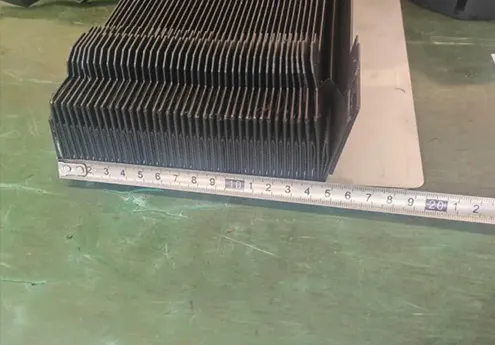chip conveyor cnc
Chip Conveyor in CNC Machining
In the world of CNC (Computer Numerical Control) machining, efficiency and precision are paramount. One critical component that significantly enhances operational efficiency is the chip conveyor. As CNC machines work, they generate metal shavings, chips, and other debris that can hinder the machining process if not properly managed. This is where chip conveyors come into play, providing an effective solution to the challenges posed by chip management.
Understanding Chip Conveyors
Chip conveyors are specialized systems designed to transport metal chips and shavings away from the CNC machine workspace to designated collection areas. They come in various configurations and designs, tailored to meet different operational needs. The most common types of chip conveyors include hinged steel belt conveyors, scraper conveyors, and magnetic conveyors, each suited for specific types of materials and applications.
Hinged steel belt conveyors are among the most widely used in CNC machining due to their durability and ability to handle heavy loads. They consist of a series of metal slats connected by hinges that create a robust belt capable of transporting chips swiftly and efficiently. Scraper conveyors use a series of blades or scrapers to push chips along a trough, making them suitable for various chip types, especially those created during milling and turning operations. On the other hand, magnetic conveyors are particularly effective for transporting ferrous materials, employing magnetic forces to move chips without the need for physical contact.
The Importance of Chip Management
Effective chip management is crucial in CNC machining for several reasons. Firstly, excessive buildup of chips can obstruct the machining process, leading to potential operational downtime. When chips accumulate around the tooling or workpiece, they can cause premature tool wear or even damage, resulting in costly repairs and reduced machine life. Moreover, an unclean work environment poses safety hazards, such as slips and falls, and can compromise the quality of the machined components.
Secondly, efficient chip removal maximizes productivity. CNC machines operate at varying speeds and intensities, generating large volumes of chips during machining cycles. By utilizing a chip conveyor system, manufacturers can ensure continuous operations. This system allows the machine to run uninterrupted, significantly increasing throughput and reducing operator workload. Operators can focus on monitoring machine performance rather than constantly checking and clearing chip accumulation.
chip conveyor cnc

Choosing the Right Chip Conveyor
Selecting the appropriate chip conveyor depends on multiple factors, including the type of CNC machining being performed, the types of materials being worked on, the size and volume of chips produced, and the available space for installation. For instance, aluminum chips tend to be lighter and can be managed effectively with a scraper conveyor, while heavier steel chips may require a more robust option like a hinged steel belt conveyor.
Additionally, considerations such as conveyor length, height, and angle of inclination must be taken into account to ensure optimal performance and compatibility with existing machine setups. Manufacturers should assess their specific operational needs and may even work with conveyor suppliers to custom design a solution that meets their unique requirements.
Maintenance and Care
Like any equipment used in a CNC environment, chip conveyors require regular maintenance and care to ensure optimal performance. Routine inspections should include checking for wear and tear, proper alignment, and functionality of moving parts. Lubrication of bearings and other components is also essential to prevent overheating and prolong the life of the conveyor.
Moreover, keeping the conveyor clean and free from debris is crucial, not only for its longevity but also for the overall efficiency of the machine shop. Regular cleaning schedules and proper training for operators can help maintain the system and ensure that the benefits of chip removal are fully realized.
Conclusion
In summary, chip conveyors are an indispensable asset in CNC machining environments. By efficiently managing metal chips and shavings, they contribute to cleaner workspaces, increased productivity, and enhanced machine longevity. As technology advances, the design and functionality of chip conveyors continue to evolve, providing ever-greater efficiency in manufacturing settings. For any CNC operation, investing in a reliable chip conveyor system is a step toward achieving excellence in machining and operational efficiency.








